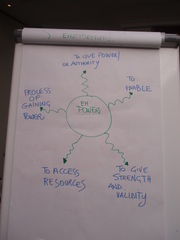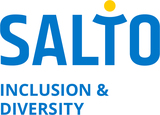Underpinning Principle: the local community!
The impact of you project is likely to extend beyond the core group of participants therefore, it is important to involve the local community in your plans and actions, to make them aware of the potential benefits, such as positive profiling, for their community.
A good starting point would be to arrange a series of meetings with community and religious leaders and family and friends of the participants to share the outcomes of your needs assessment activity.
Be prepared to meet with them on their own terms. Why not ask them to host a meeting at their religious or community centre?
At the very least your meetings should address the following points:
Introduction to the aims and objectives of your project
- The potential benefits to participants and the wider community
- Project timeline
- Dissemination and exploitation of project results
- Future plans
Remember:
to keep the community on board you will require involving them at all stages of the project. Follow up meetings and an invitation to participate in the project perhaps by hosting a field trip or other event should be a central part of your project plan.
> TIP: When organising your meetings think Intersectionality and Participation!
Intersectionality =
the complex mix (such as age, race, gender, family, culture) of identities which influence the way an individual participates at all, or any, level of society.
So, for example if your project participants are Roma it will be important to extent the invitation to all of the family this could mean providing childcare facilities and a very large parking space for the trucks and vans. On the other hand if your project participants are Muslim you may have to provide separate meeting spaces for male family members and if you are providing food it should be halal.
Participation:
According to Hart (1992) the highest level of participation is when adults and young people share the planning and implementation of tasks.
With this in mind, the role of the worker is to ensure the participants have the skills and information they require to plan and implement the meetings NOT to arrange and facilitate them on their behalf.
Effective participation also extends to the attendees of the meetings, be sure to structure your meetings to maximise their input!
^^ top ^^
The community: Arnstein's ladder of citizen participation
Used as the basis for Hart's ladder of young people's participation, Sherry Arnstein's, ladder of citizen participation (the local community) describes the eight stages of citizen participation as follows, as with Hart's ladder the lowest represents the least participation:
- 1. Manipulation and 2. Therapy.
- Both are non participative. The aim is to stifle dissent or "educate" the participants so that they accept that the decision maker way is the best way.
- 3. Informing.
- Generally a one-way flow of information. Decision makers inform citizens of new policy and practice but there is not opportunity for inter dialogue.
- 4. Consultation.
- Citizens are consulted on proposed policy and practice but as decisions have effectively already been taken this become a "tick box" exercise.
- 5. Placation.
- Decision makers hand pick a selection of citizens who are sympathetic to their cause thus ensuring that there will be no dissent but still allowing them to assert that citizens have been involved in the decision making processes.
- 6. Partnership.
- Power is redistributed through negotiation between citizens and decision makers. Planning and decision-making responsibilities are shared.
- 7. Delegated power.
- Decision making powers are devolved to citizens, citizen panels and groups are established and are actively involved in shaping policy and practice. Citizens have the power of veto.
- 8. Citizen Control.
- Citizens are empowered to manage community programmes through access to funding and other resources.
- Sherry R. Arnstein (1969)
> From: Tammi, L., (2008) Empowerment through participation.
^^ top ^^
 Hart's ladder of participation
Hart's ladder of participation To empower
To empower
